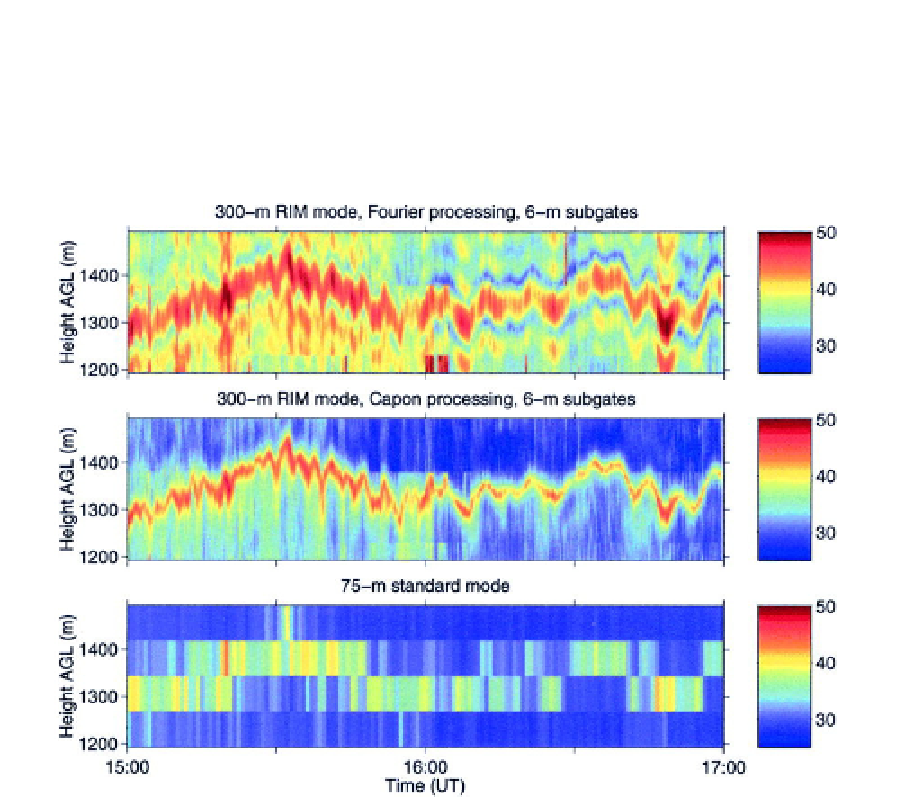Geoscience Reference
In-Depth Information
receiver sensitivity constant. RIM also contributes to efficient usage of frequencies. Chilson
et al. (2003) pointed out that for the RIM measurement shown in Fig. 5, the spurious
intensity of frequency power spectrum of transmitted pulses was smaller than the 0.4-μs
transmitted pulse width which also uses 2.5-MHz bandwidth (see their Fig. 2). RIM is
especially useful for VHF wind profiling radars because their frequency bandwidth allowed
by license and that determined by antenna are limited.
©American Meteorological Society. Reprinted with permission.
Fig. 5. Time-range plot of (top) brightness produced by the Fourier-based method, (center)
brightness produced by the Capon method, and (bottom) backscattered power expressed in
decibels (Chilson et al., 2003). The data was collected with the Platville 915-MHz
tropospheric wind profiler. See text for details of the measurement.
Pulse compression using frequency-modulated continuous wave (FMCW) is also useful for
UHF clear-air radars to improve their range resolution down to several meters or less (Eaton
et al., 1995; Richter, 1969). However, a use of the FMCW pulse compression causes
deterioration in data quality by range aliasing and by range ambiguity caused by Doppler
shift of scatterers. Though range resolution in RIM depends on range distribution of
scatterers, signal-to-noise ratio, and signal processing method used for RIM (e.g., Palmer et
al., 1999; Luce et al., 2001; Smaϊni et al., 2002), RIM does not suffer the drawbacks of using
short transmitted pulse or FMCW pulse compression.
RIM contributes to reduce amount of on-line data size and computational complexity. In the
case shown in Fig. 5, although the on-line sampling interval of the RIM measurement was 2
μs (i.e., 300-m range spacing), brightness data are able to be processed with finer (6-m) range

